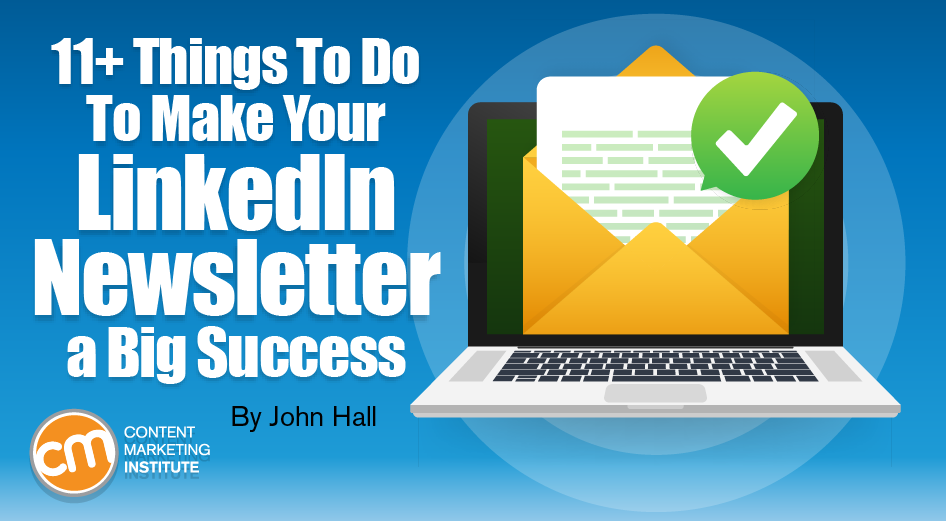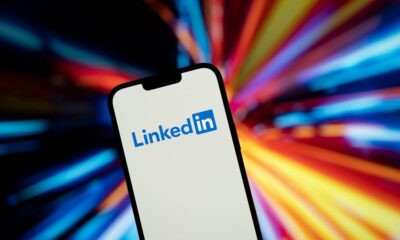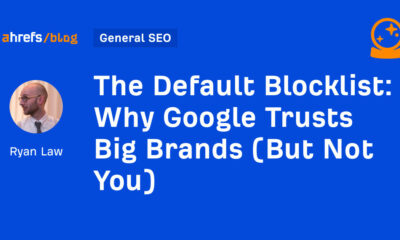MARKETING
11+ Things To Do To Make Your LinkedIn Newsletter a Big Success

Initially, LinkedIn users needed an invitation to create a newsletter. Then, they expanded to allow individuals who met a minimum follower count and recently shared original content. More recently, they expanded further by allowing company profiles to create a newsletter, too.
But just having an opportunity to create a newsletter on LinkedIn and publishing content consistently aren’t enough to see results. For a noticeable benefit, you want to optimize your newsletter, so it can reach its potential.
Optimize your @LinkedIn #newsletter so it can reach its potential, says @JohnHall via @CMIContent. #ContentMarketing Click To Tweet
Let’s explore the strategic decisions to make, how to optimize your newsletter, and identify the lessons I learned in executing my LinkedIn newsletter.
Executing a LinkedIn newsletter as part of a content strategy
First, you have a decision to make – should the newsletter come from you as a person or the organization that employs you. Each has its own pros and cons.
Distribution by an individual is great for the person because you can take your audience with you if you switch employers. An individual name also allows the company to humanize the brand as people love hearing from thought leaders within the company than a brand name. Solo sending also makes it easier to write more personally without following strict branded guidelines.
Distribution from a company can be a good choice, too. It helps the organization protect itself if its individual thought leaders leave. It also can lead to more conversions because people who subscribe to a company’s newsletter are more likely to have an intention to buy the product or service it sells. Finally, a brand newsletter can be a good opportunity for cross-promotion with other brands that have large audiences with similar intent to buy.
Decide if the @LinkedIn #newsletter will be published by an individual or company account, says @JohnHall via @CMIContent. #ContentMarketing Click To Tweet
You also need to see how a LinkedIn newsletter fits into your content marketing strategy. I like this growth marketing guide that details the pirate funnel – awareness, acquisition, activation, retention, revenue, and referral. (Pronounce just the acronym – AAARRR – and you’ll get the pirate name.)
LinkedIn newsletters can help with multiple areas of the funnel. They can assist with general awareness as you widen your reach on LinkedIn. They help with retention as you stay connected with your current clients who opt-in to receive your newsletter content. Consistently delivering valuable and educational content should help retain these clients and keep your company top of mind.
LinkedIn newsletters aren’t limited to awareness and retention goals. They really can help any stage of the funnel in measurable and provable ways if you squeeze the value out of a LinkedIn newsletter campaign. By clearly identifying the goals to achieve through the LinkedIn newsletter, you can better position its success.
HANDPICKED RELATED CONTENT:
4 ways to optimize your LinkedIn newsletter
To get the best results from your newsletter, follow these four tips:
Fill out every detail in your LinkedIn profile
A professional and impressive newsletter alongside an incomplete profile doesn’t instill credibility in your audience.
Prioritize natural calls to action
One goal of a successful newsletter is to further readers down a path to your brand. Include organic calls to action, such as a product link or a recommended link to other content, such as your podcast, in your brand arsenal.
Bob Glazer is a great example of providing calls to action in his newsletter. In this post about a new podcast episode, he concludes by pointing people to other popular episodes of his podcast.
Choose timely or fresh subject matter
A good newsletter gives newer info and occasionally dives into relevant trending topics. Jeff Wong does this well. In this post, he covers the need for thoughtful exploration of the metaverse. Since that’s a hot topic, his article may be more visible in other areas of LinkedIn focused on that subject or trend.
Track who views and adjust accordingly
Speaking of specific distribution, that’s the beauty of LinkedIn. There’s so much data behind the scenes that targeted content can go to the people who are interested. Publications don’t have the same luxury because they don’t have all the social data LinkedIn does.
Use @LinkedIn’s social data to understand who your #newsletter audience is and how they behave, says @JohnHall via @CMIContent. #ContentMarketing Click To Tweet
Consider its data related to job positions, location, etc., when you look at viewership figures. You can continuously learn about what content does well and naturally attracts certain positions.
Take the example below. The article had 63,617 views – about average for one of my articles. Public relations specialists topped the list for the readers’ roles. (Given the volume of job titles, I’m more interested in the ranking than the less-than-1% stat. This makes sense since the article was a PR trends list.

By sourcing this data, you can keep looking at each article to see which content resonates with what audience. You then use those results to inform your content strategy.
7 lessons learned about LinkedIn newsletters
Based on my experience of building a solid newsletter following, here are some observations:
Both original and syndicated content do well
We haven’t seen a difference in views/engagement based on the content’s origin. Therefore, don’t put undue pressure on your team to publish a bunch of original content on LinkedIn. Identify ways to double dip and republish older content or content from other sites (with their permission.) Credit the original source link at the bottom of the article. This step also can increase the content’s ROI, too.
Earn a boost for your SEO efforts
Even if Google doesn’t assign a value to repurposing content, the LinkedIn newsletter boost can help bring good traffic to your site. If it’s set up right, readers will stay on the page to read through more of your content, which has a positive effect on search results.
Avoid going too promotional
Publishing overly promotional content can put your company at risk of losing your audience’s trust. This is the biggest mistake people make with their LinkedIn newsletter. An occasional piece that promotes is fine when mixed with valuable content published for a long time.
We do something similar to what the military does for security risks – assigning defcon levels for risking trust with the audience. If friends say our content is coming off too promotional consistently, we tone it down and publish the non-selling-related content in the newsletter. Once we get back to a green status, we can occasionally throw in a more promotional piece. Although ROI is very important to strategies like this, I’ve learned that trust is more important over time to retain an audience.
Comment and engage
Newsletters are most successful when subscribers feel connected to you and your brand. Direct engagement through commenting is an effective way to accomplish this.
Publish content consistently
Staying top of mind helps you stand out among other newsletters. People usually aren’t going to read hundreds of newsletters every week or month. Be one that people consistently look forward to receiving.
Think cross-promotion
Reach out to other influencers and others with good audiences to encourage cross-promoting. Building mutually beneficial relationships can move the needle much further than trying to do everything yourself.
Align the content with business goals and treat it as a lead funnel
The LinkedIn newsletter still needs to be focused on what’s most valuable to the reader and to keep their trust, but it’s OK to align it with content on your company site with the right calls to action to increase conversions.
Publish a LinkedIn newsletter
LinkedIn newsletters are a fantastic way to build your brand and engage with a new audience. A good step to learning more is to look for LinkedIn newsletter lists, such as the one I compiled. Go through each contributor and see what you like about theirs and what you don’t. Then combine that with this info and add in what will make yours unique to create a relevant, valuable newsletter that stands out in your audience’s mind.
Cover image by Joseph Kalinowski/Content Marketing Institute

















You must be logged in to post a comment Login